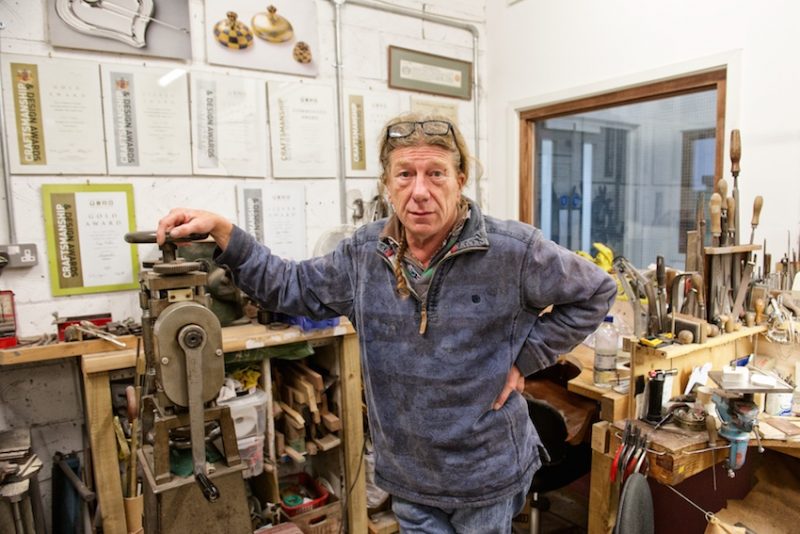
Ray in his workshop
In an era of relentless self-promotion, the reticence of Faversham’s artists and craftsmen is puzzling sometimes, given their talent, but also refreshing and remarkable. A leading practitioner of this quiet application is Ray Walton, who exercises his award-winning silversmithing skills in a basement workshop at Creek Creative.
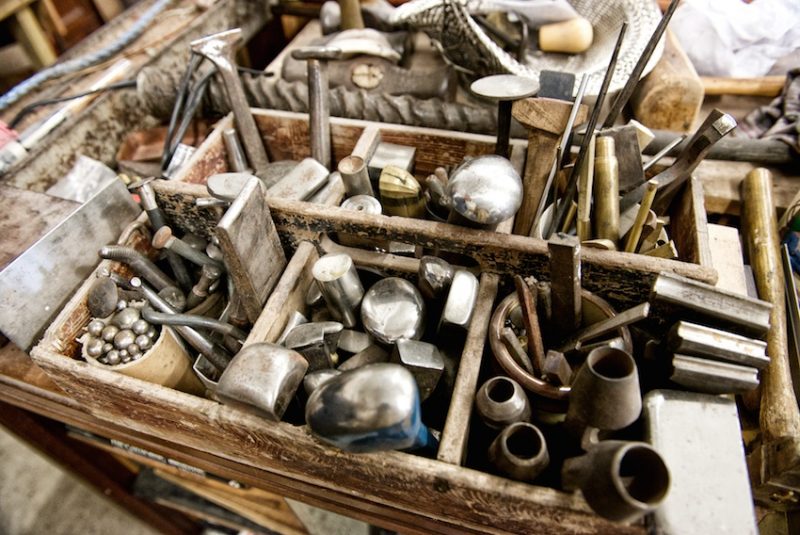
The tools of Ray’s award-winning skills
‘I haven’t really got lots of words,’ says Ray, who has been hard to coax into giving an interview. He prefers, he says, that his work speak for him, and it does, gaining him recognition and rewards. He is a Fellow of The Institute of Professional Goldsmiths, a Member of the British Watch & Clockmakers Guild, a Freeman of The Goldsmiths’ Company, which is one of the City of London’s great livery companies, and a Freeman of the City of London.
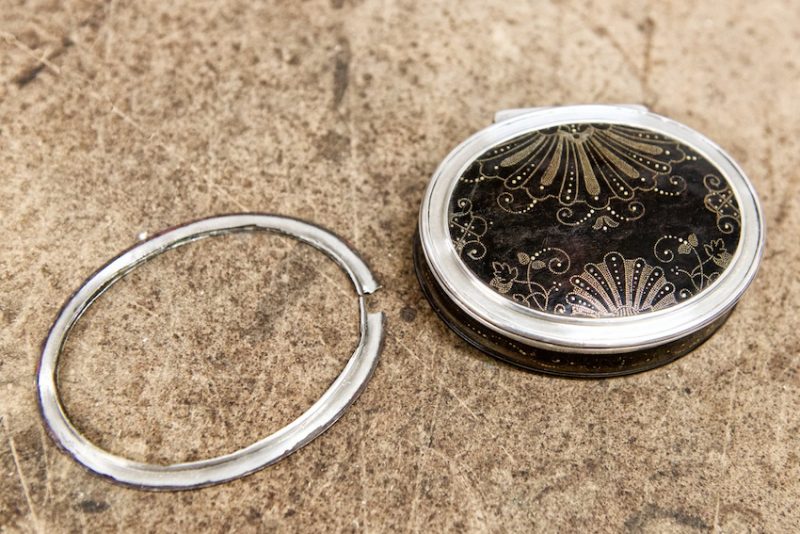
A 17th century box – Ray replaced the silver band
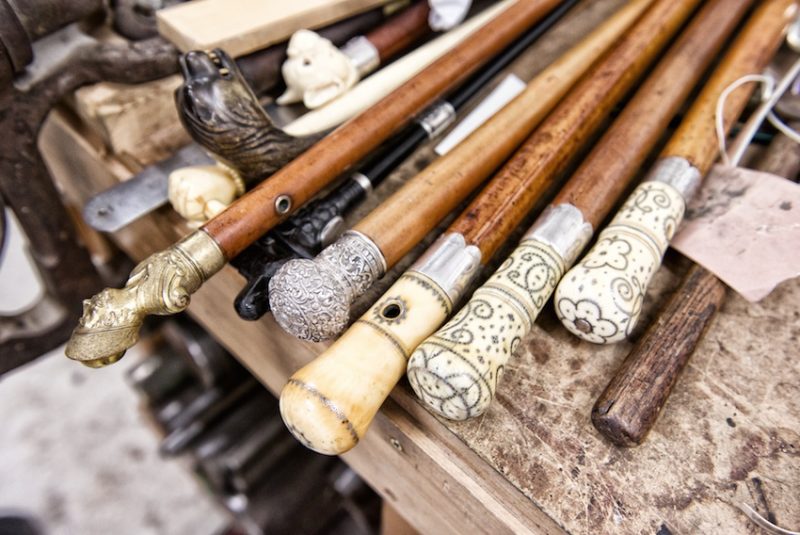
Restored walking sticks
He has won many awards, and in addition to making contemporary silver on commission and to his own designs, teaches one day a week at The Goldsmiths’ Centre, set up five years ago in Clerkenwell by The Goldsmiths’ Company for the professional training of goldsmiths, silversmiths and allied trades. Ray also regilds and restores all types of clocks and undertakes the restoration and conservation of historic and modern metalwork. Projects have included a 1665 Canterbury Mace and the overhaul of a large chandelier for Restoration House in Rochester. Ray defines restoration as ‘repairing, making as new again,’ while conservation, if I have understood correctly, is more concerned with protection and care into the future. A fine line is to be drawn between the two, says Ray, and projects may draw on both approaches.
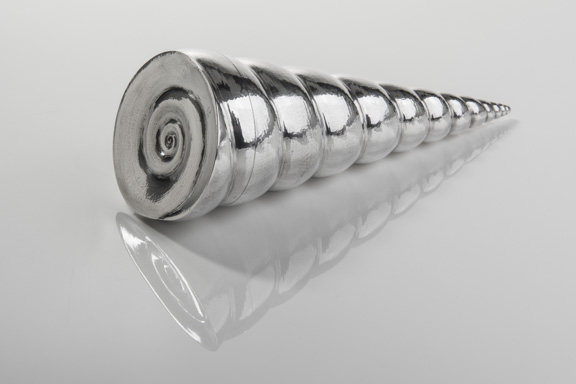
Inspiration comes from natural forms, photo by Peter Smith

A chased vase, photo by Peter Smith
Ray hails from Stoke Newington in north east London, but has had a workshop in Faversham for 36 years, first in Abbey Place, and then, for the last six or seven years, in his machine-filled workshop in Abbey Street. Why Faversham? ‘It’s the first nice place you come to in Kent,’ says Ray with the hint of a smile. And why silversmithing? ‘Art was my thing while I was at school.’ He says he was really fortunate in that in his last year he was able to make jewellery. This led to a foundation course at Hornsey Art College in the ‘70s, the opportunity to find out where his talents and interests lay, and then to further study and a Silversmithing Diploma at Medway College of Design. Ray laments the drift of vocational training in recent decades into degree courses ‘filled up with words and waffle’ rather than offering practical skills that can provide a living.
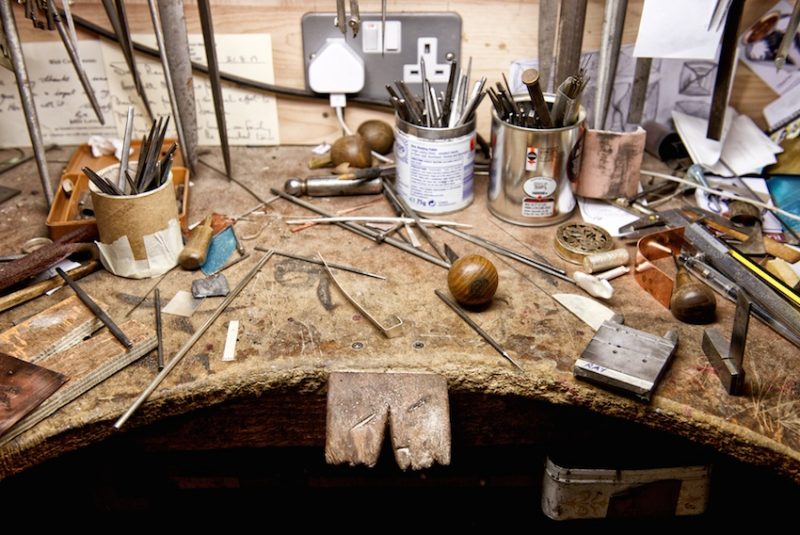
Ray’s workstation
Ray’s workstation is a bench skin, consisting of an ancient piece of leather hung under a semi-circle cut in the bench. The bench skin is used to catch any filings or fragments of silver. It is also a useful repository for tools, although, admits Ray: ‘It’s poor practice, you’re not meant to have all your tools knocking together and going blunt.’ Elsewhere in the workshop are large pieces of machinery – ‘a lot of the equipment I’ve got is for making the tools for the job I’ve got.’ Much of this, such as the device used to shape a beaker, he used to be able to buy, but nowadays, he says, you have to make it yourself. Where he can, he buys old machinery, ‘because mostly it’s better than new.’
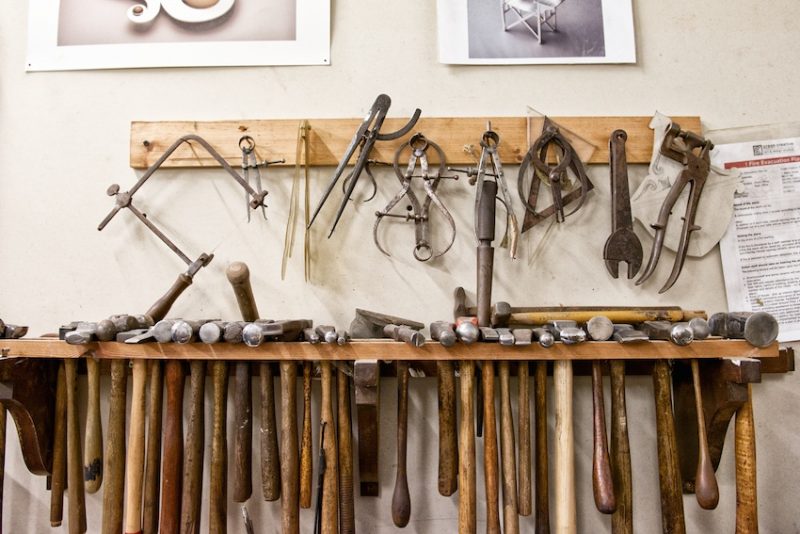
An immaculate row of hammers
Also in evidence are large numbers of hand tools, including an immaculate row of hammers. An interest in historic metalwork has led to some interesting commissions such as making replicas of a 2,000-year-old ceremonial bucket and an Anglo-Saxon disc brooch for the Channel 4 television series, Time Team. ‘Something that fascinates me,’ he says, ‘is that what we’re doing now is the same as 2,000 years ago. They were using charcoal and bellows for their soldering, while I’m using gas. A beaker,’ he continues, ‘starts as a flat sheet, then is raised up over a steel former and planished, which means smoothing out with a hammer. A hammer and a flame are my main tools.’
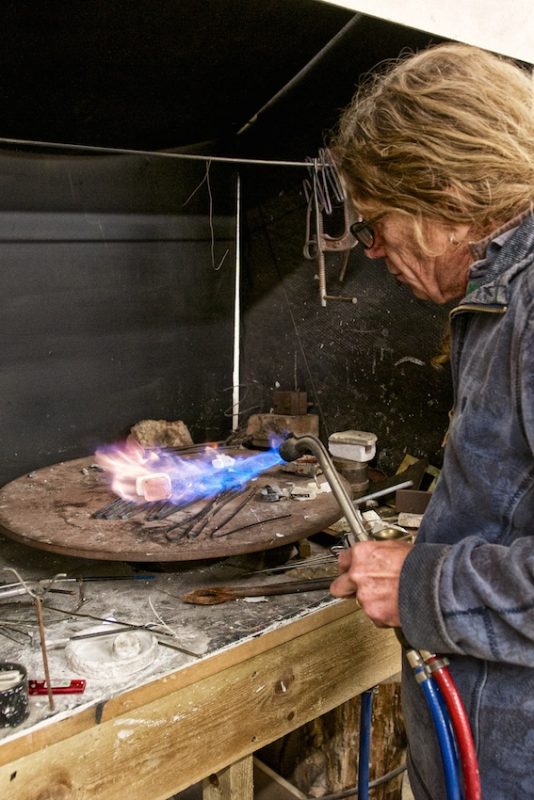
Flame (and a hammer) are Ray’s main tools
Recent commissions include chalices, a model of the Museum of Islamic Art in Doha, an obelisk destined for HRH The Prince of Wales’s model village at Poundbury, and a box for a private collector of silver boxes. Ray makes a lot of exquisite small boxes, on commission and between commissions when he hasn’t got a pressing job on. He showed me tiny boxes with ammonites set in the lid and a set of three cylindrical boxes with chasing on the top and the sides textured with a rough file to give the appearance of shot silk. The largest box has a detachable lid which is also a brooch. Ingenious and beautiful. Ray likes forms found in nature and his current project is a leaf-shaped box with a hinged lid decorated with an acorn and an oak leaf.
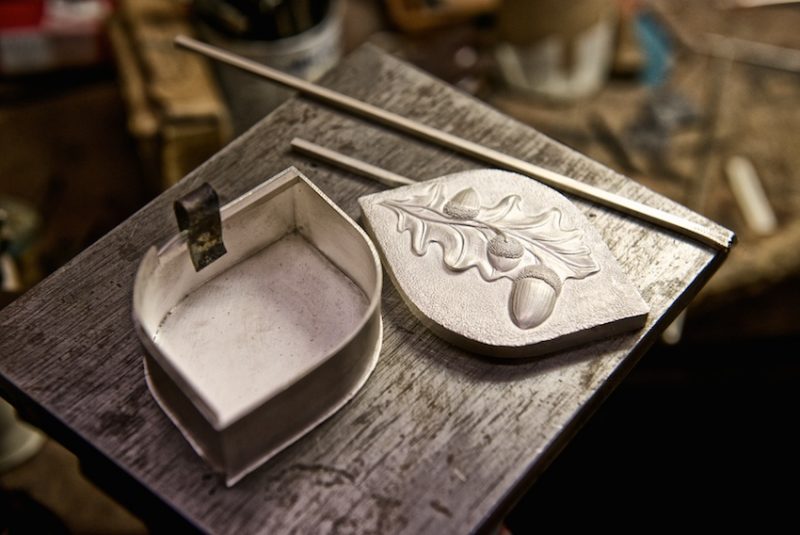
A current project – a leaf-shaped box
On Tuesdays, Ray is to be found in London at The Goldsmiths’ Centre tutoring students on a one-year pre-apprenticeship course in which they are taught engraving, enamelling, chasing and design and are encouraged to identify their particular interests. The hope is that the students will go on to do ‘a proper four-year apprenticeship course’, coming into the Centre on day release throughout. Ray also mentors postgraduates who ‘need help to put more tools in their toolbox and extend their skills’. The Goldsmiths’ Company pays Ray to run this intern course, provides the students with £1,000 for materials and pays them a subsistence allowance. ‘There is a good chance,’ says Ray, ‘that all those on the course will have the opportunity to exhibit free of charge at the annual Goldsmiths’ Fair at Goldsmiths’ Hall.’
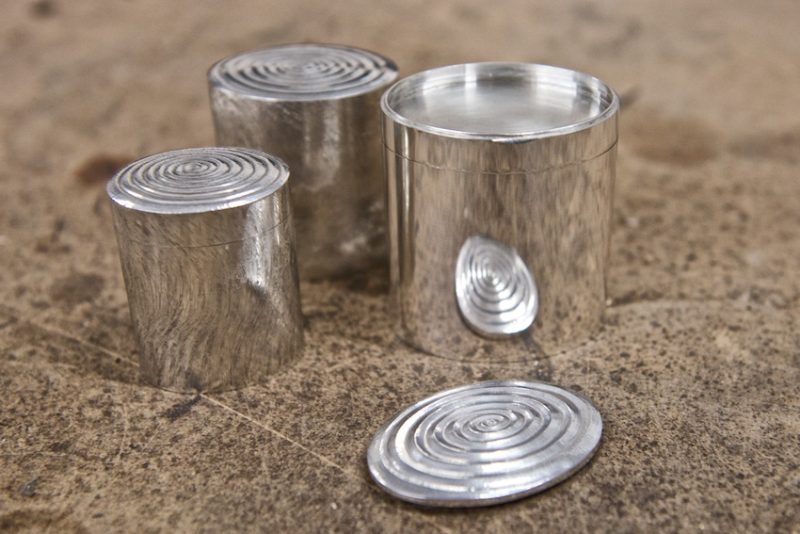
Cylindrical boxes
Faversham residents will be able to see Ray’s exquisite and covetable work, along with that of 12 or so other Kent-based jewellery designer/makers and silversmiths at a selling exhibition, Precious Kent: Objects of Desire, to be held at the Pie Factory in Margate on the first weekend in December. Flyers are available now or will be shortly from Creek Creative.
Ray Walton
Unit 4
Creek Creative
1 Abbey Street
Faversham
ME13 7BE
Tel 01795 538674
www.raywaltonsilversmith.co.uk
Text: Sarah. Photography: Lisa